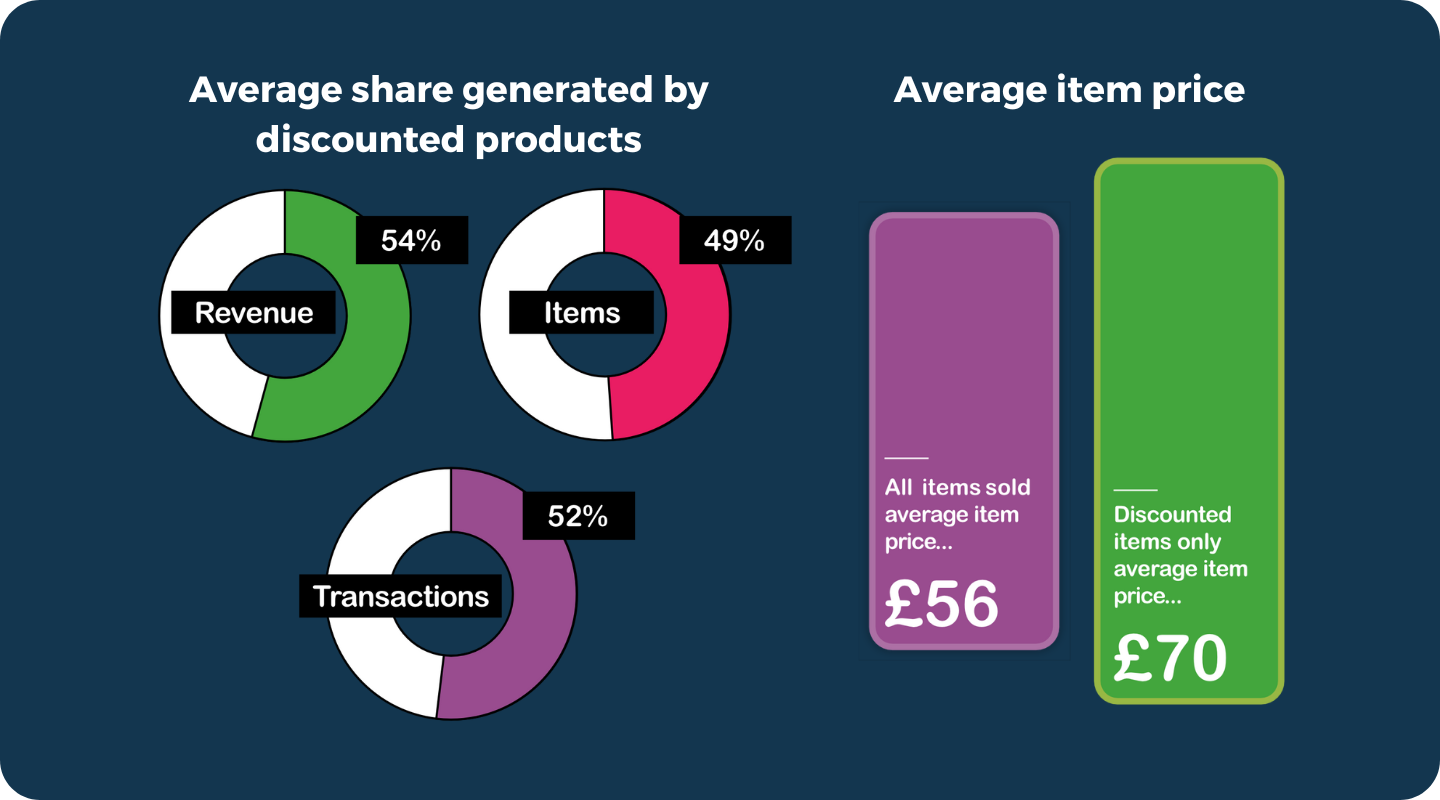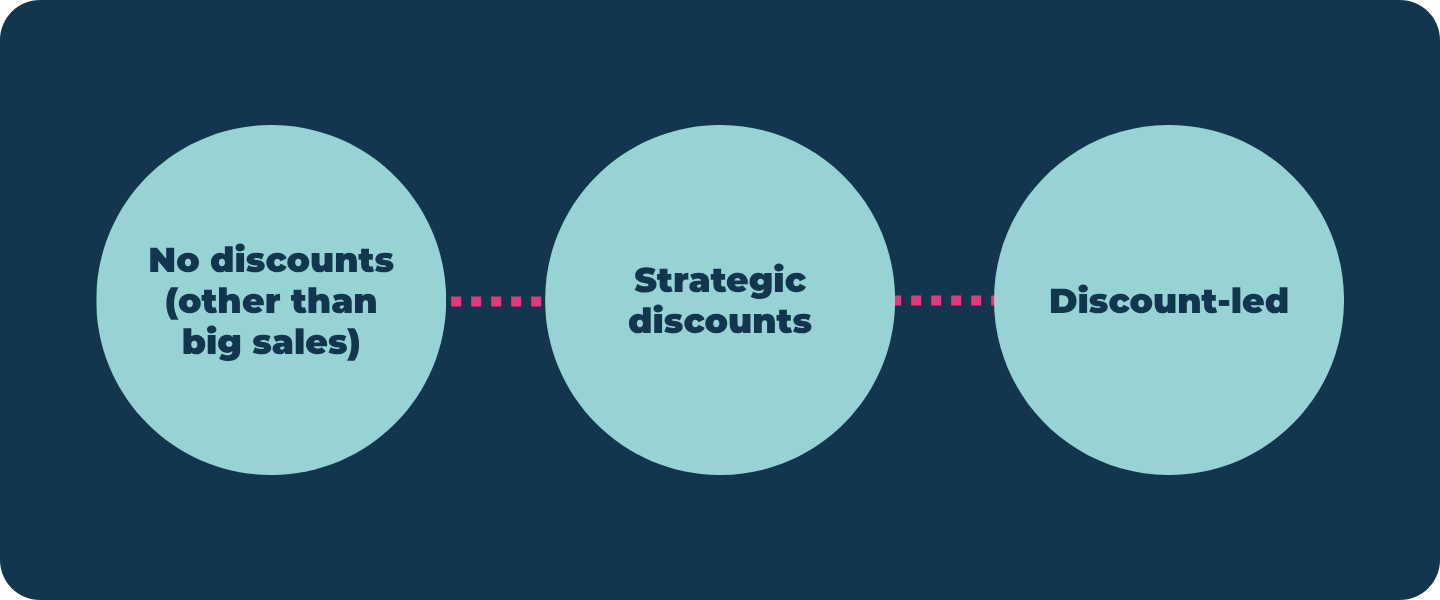Creating an eCommerce promotions strategy

In eCommerce, the click of a button can seal a deal or lead to the disappointment of cart abandonment. The need for a robust, well-thought-out promotions strategy cannot be underestimated.
According to research by 2 Visions a staggering 62% of shoppers wait for discounts on clothing before making a purchase. Promotions aren't just a part of the eCommerce game; they're often the game-changer.
Promotions go beyond mere price reductions; they're sophisticated tools that, when leveraged correctly, can significantly enhance customer loyalty, brand visibility, and, ultimately, sales conversions.
However, the effectiveness of these promotions hinges on a nuanced understanding of your audience, precise timing, and the optimal mix of promotional tactics.
What is your eCommerce promotions strategy
Is your promotions strategy just throwing discounts at the wall and hoping something sticks?
Are you giving away margin to customers who would have bought anyway?
Do you know which promotions drive real incremental revenue versus just shifting sales around?
That is the wrong question. The right question is: How do you build a promotions strategy that drives profitable growth without training customers to only buy on sale?
The brutal truth about promotions
Most retailers are doing promotions backwards.
They discount when sales are poor. They blast the same offers to everyone. They measure success by conversion rates instead of profit.
Here's what the data actually shows:
- 54% of total revenue comes from discounted products
- 52% of all transactions involve discounted items
- 49% of all items sold are discounted

Source: IMRG/RevLifter Promotions Report
But here's the kicker: discounted items have 20% higher average prices than non-discounted items (£70 vs £56). Retailers are strategically discounting higher-value items that need more consideration.
Reality check: If you're discounting everything equally, you're leaving money on the table.
The psychology behind why promotions work
Your customers' brains are wired to respond to specific psychological triggers. Use them.
Anchoring effect: Make everything else look cheap
Show the original price. Always.
A product "was £300, now £150" feels like a bargain because the higher anchor sets expectations. This works even when the anchor is arbitrary.
What works:
- Use "Was/Now" pricing for high-ticket items
- Pair with visual elements like red discount tags
- Test different anchor prices to find optimal perception
Scarcity principle: FOMO drives action
"Only 3 left in stock" converts better than "20% off."
The human brain assigns higher value to limited availability. Countdown timers and stock counters trigger urgent decision-making.
What works:
- "Hurry! Sale ends in 2 hours!" with countdown clock
- "Only X left at this price"
- Limited-time exclusive access for email subscribers
Social proof: Let others sell for you
91% of consumers trust online reviews as much as personal recommendations.
Real-time purchase activity, customer photos, and testimonials create authenticity and reduce purchase anxiety.
What works:
- Display recent purchases: "Sarah from London just bought this"
- Show review counts and ratings prominently
- Use customer photos in product galleries
Strategy framework: Beyond random discounting
Stop asking "Should we run a promotion?"
Start asking "What specific business problem are we solving?"
The four promotion objectives
1. Increase conversion rates
- Exit-intent offers for abandoning visitors
- New customer acquisition discounts
- Invalid code recovery offers
2. Increase average order value
- Stretch & Save: "Spend £100, get 15% off"
- Product recommendations based on cart contents
- Bundle deals with complementary items
3. Manage inventory
- Targeted offers on slow-moving stock
- Seasonal clearance with smart timing
- Category-specific promotions to balance mix
4. Optimize promotion spend
- Suppress offers for high-intent shoppers
- Target only customers who need the nudge
- Use behavioral signals to predict intent
Considerations for deciding on a promotions strategy
When formulating your promotions strategy, several critical factors need a thorough evaluation to ensure that the chosen method aligns with your overall business goals without diluting your brand's equity or profitability.
These considerations play a significant role in shaping an effective and sustainable promotions strategy that attracts customers and supports your business objectives and brand positioning.
Some of these considerations include:
Brand identity and positioning
Understand how discounts and promotions fit within your brand's identity. Luxury brands, for instance, might limit discounts to maintain exclusivity and high perceived value, whereas fast fashion brands might use promotions to drive volume and customer acquisition.
Profit margins
Calculating how discounts can impact your profit margins is vital. Deep discounts may drive sales volume but can also erode margins if not carefully balanced. Analyse different discount levels to find a sweet spot that increases sales while maintaining healthy margins.
Customer expectations and behavior
Gauge how your target audience responds to promotions. Some customers may only purchase discounted items, which could affect long-term profitability. Identifying and understanding these patterns will help craft offers that appeal to your customer base without discouraging unfavorable buying habits.
Existing use of offers
Review your current promotions strategy and its effectiveness. Analyzing past promotions can uncover insights into what works and what doesn't, helping to refine future strategies.
Competitive landscape
Keep an eye on your competitors' promotional activities. Staying competitive without engaging in a race to the bottom requires strategic thinking. Discounts should ideally differentiate your brand rather than match competitors' offers.
Inventory management
Promotions can be a tool for efficiently managing inventory levels. Strategic discounts on overstocked or seasonal items can free up warehouse space and improve cash flow, but ensure this doesn't negatively impact your brand's perception.
Choose your approach to eCommerce promotions
Adopting a methodology that aligns with your brand ethos and business objectives is critical when discussing discounts within your eCommerce promotions strategy.

Your approach could be:
No discounts (other than big sales)
Some brands avoid discounts altogether, focusing instead on their product's perceived value and exclusivity. This approach can help maintain margins and brand prestige. However, all brands tend to run a sale at some point.
Discount-led
A discount-led strategy might be effective for businesses aiming to attract price-sensitive consumers. This could involve regular sales, flash deals, or loyalty discounts to drive traffic and increase purchase frequency. However, caution is advised to avoid undermining perceived value.
Strategic discounts
Implementing discounts with strict criteria can help maintain profitability while using savings' appeal. Criteria could include minimum purchase amounts for eligibility, time-bound offers to create urgency, or exclusive discounts for newsletter subscribers or first-time purchasers. This approach encourages more strategic consumer shopping behaviour and can help build a loyal customer base.
Overwhelming consumers with elaborate promotions, discounts, coupons, and loyalty rewards can weaken consumer loyalty, tarnish brand reputation, and suppress new revenue opportunities. Instead, retailers should adopt a streamlined, customer-centric approach.
Smarter Retailer Promotions for a Saturated Market, BCG
Choosing the right discount strategy requires a deep understanding of your target market, competition, and profit margins. It's a balance between attracting customers and preserving the long-term value of your brand.
Common mistakes that kill profitability
Over-discounting: The margin death spiral
Deep discounts train customers to wait for sales.
Better approach: Focus on perceived value through bundling, free shipping, or exclusive access.
Blanket offers to everyone
30% of discounted sales would have happened at full price anyway.
Better approach: Use behavioral signals to suppress offers for customers already planning to buy.
Ignoring mobile optimization
Mobile commerce is 60%+ of traffic for most retailers.
Test every promotion on mobile. A broken checkout experience on phones kills conversions faster than any discount can save them.
Choice paralysis
Too many promotion options reduce conversion rates.
Better approach: Highlight one clear, compelling offer rather than bombarding customers with multiple deals.
Measuring what matters
Track the right metrics
Don't just measure:
- Conversion rate
- Revenue per campaigm
- Discount usage rates
Actually measure:
- Incremental revenue (vs. control groups)
- Customer lifetime value impact
- Margin per transactionRepeat purchase behavior
The 30-day rule
Measure promotion impact over 30 days, not just the campaign period.
Some promotions cannibalize future sales. Others build customer loyalty that pays dividends later.
Building your promotion calendar
Plan 12 months ahead
- Q1: New Year fitness/organization themes, Valentine's Day
- Q2: Spring refresh, Mother's Day, Father's Day
- Q3: Summer clearance, back-to-school
- Q4: Halloween, Black Friday, Christmas
Layer your approach
- Always-on promotions: New customer offers, cart abandonment
- Seasonal campaigns: Tied to retail calendar and inventory needs
- Flash promotions: Inventory management and engagement spikes
Test everything
A/B test every element:
- Offer amount (10% vs. £10 vs. free shipping)
- Timing (immediately vs. after 30 seconds)
- Copy ("Limited time" vs. "Exclusive offer")
- Visual design (red vs. blue, popup vs. banner)
Making it sustainable
Avoid the boom-bust cycle
Retailers often resort to discounts when sales are poor. This creates dependency and erodes brand value.
Better approach: Use promotions strategically to solve specific problems, not as a panic button.
Build for the long term
Focus on customer lifetime value, not just immediate conversions.
A customer acquired with a 50% discount might never buy at full price. A customer acquired with free shipping and excellent service might become a loyal advocate.
Keep testing and optimizing
Your best-performing promotion today will be mediocre in six months.
Customer behavior changes. Competitors adapt. Market conditions shift.
Build a culture of continuous testing and optimization.
Promotions are powerful tools
But they can be dangerous weapons when used carelessly.
The difference between the two is data, strategy, and relentless testing.
Stop guessing what your customers want. Start measuring what actually drives profitable behavior.
Your margins will thank you.






